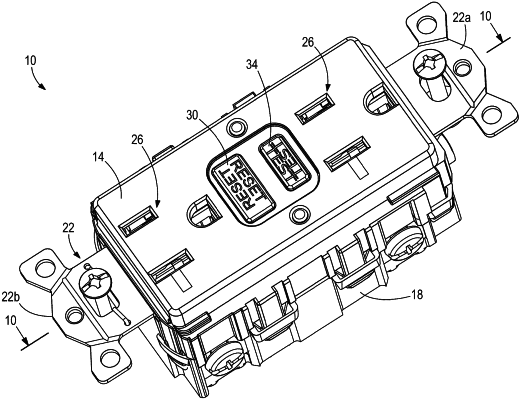| CPC H02H 3/162 (2013.01) [H01H 83/04 (2013.01); H01H 2071/044 (2013.01); H01H 2083/045 (2013.01)] | 18 Claims |

|
1. A circuit interrupting device comprising:
an input conductor for electrically connecting to an external power supply;
a load conductor for electrically connecting to a load, the load conductor including a load terminal;
a face conductor for electrically connecting to an external load, the face conductor including a face terminal; and
a brush conductor in electrical communication with the input conductor and movable between a closed position and an open position, the brush conductor including a first portion supporting a first terminal and a second terminal, the first terminal configured to contact the load terminal and the second terminal configured to contact the face terminal, the brush conductor including a second portion offset from the first portion such that the first portion and the second portion are positioned in separate planes, the brush conductor including a bridge connected between the first portion and the second portion, movement of the brush conductor to the closed position causing deflection of the bridge, deflection of the bridge creating a moment to provide a contact force on the first terminal.
|